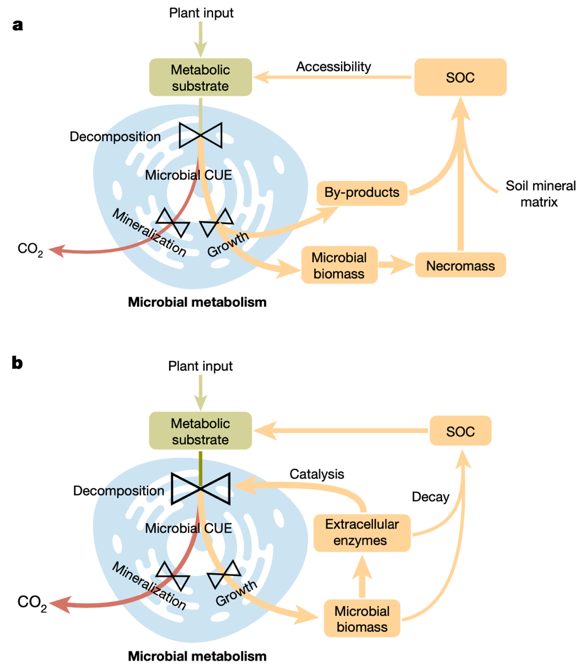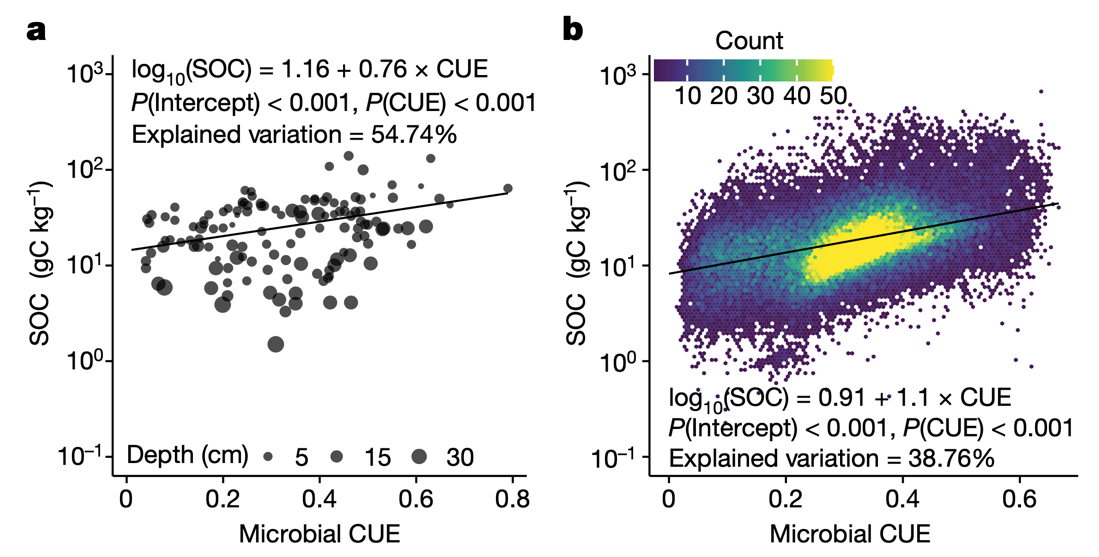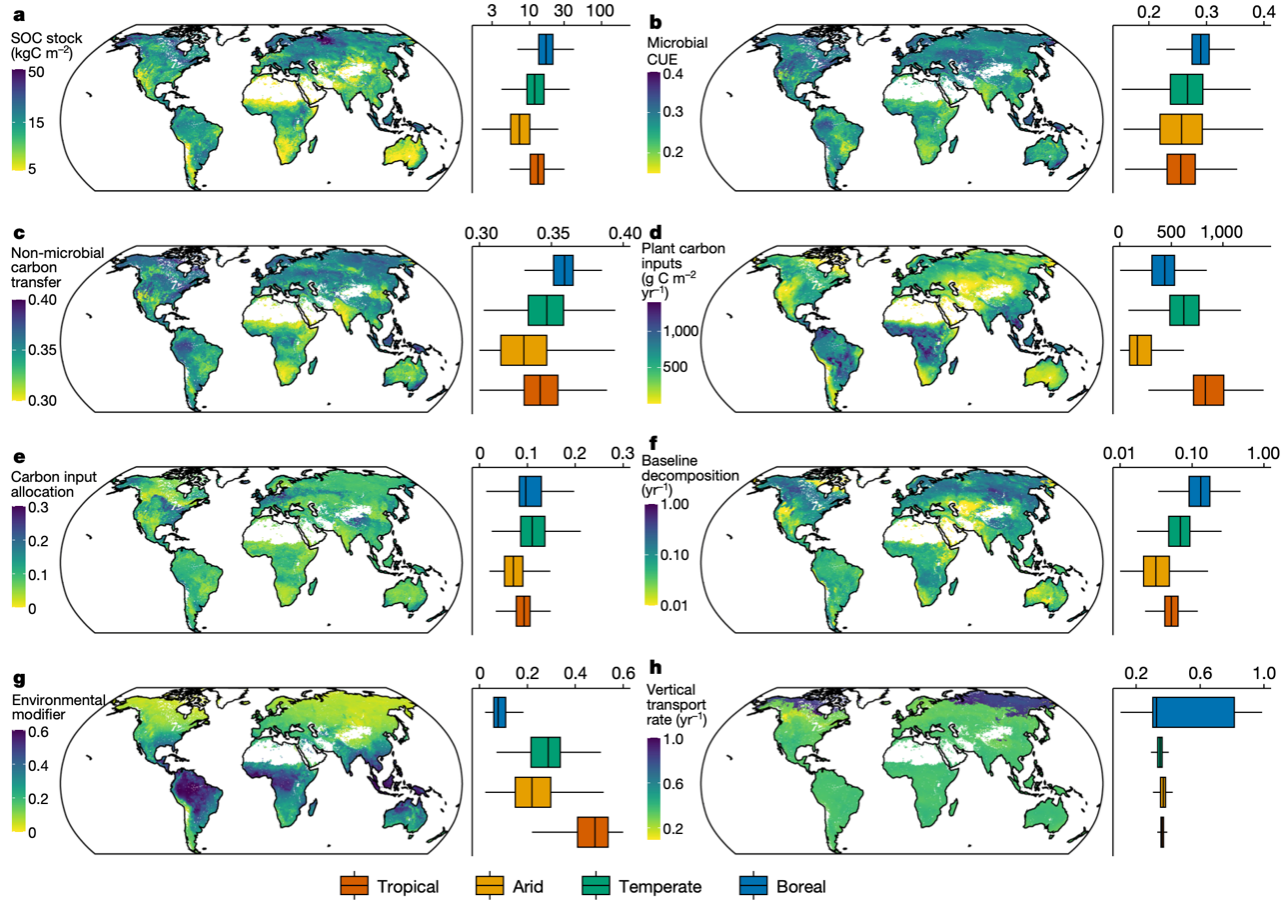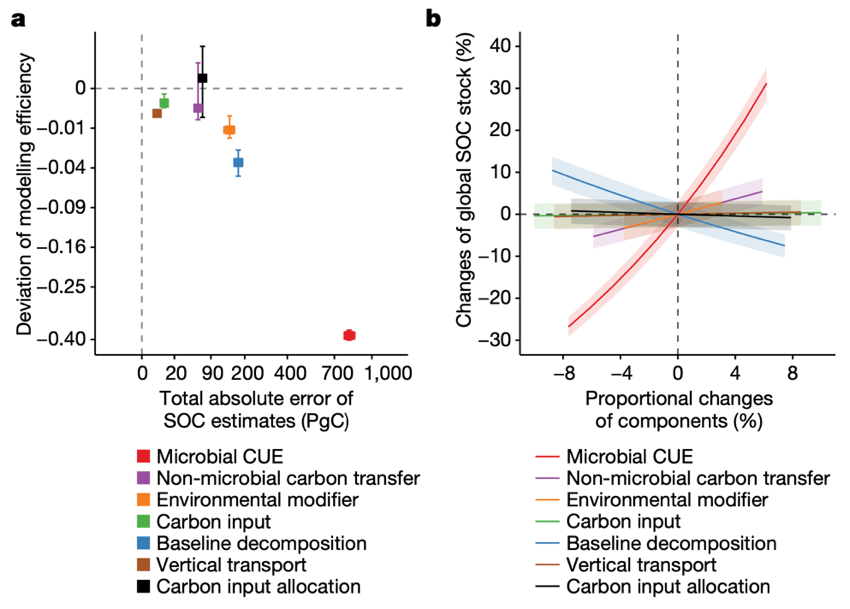Soils store four times as much carbon as vegetation. Loss of soil organic carbon may accelerate global warming, whereas promoting soil carbon storage to sequester more carbon dioxide (CO2) as soil organic carbon can help mitigate climate change. A recent research led by Tsinghua University and Cornell University revealed that microorganisms are by far the most influential factor in soil carbon storage.
This interdisciplinary study incorporated a microbial computer model that describes various processes in the soil carbon cycle, the world's largest soil carbon dataset, and sophisticated techniques such as data assimilation and deep learning to better understand soil carbon dynamics. This international collaboration was coordinated by Professor Xiaomeng Huang and Ph.D. student Feng Tao from the Department of Earth System Science at Tsinghua University, as well as Professor Yiqi Luo from Cornell University.
This is the first study to compare the relative importance of microbial processes in the soil carbon cycle to other processes. The critical role of microbial carbon use efficiency identified in this study suggests that future research should investigate management practices that may influence microbial processes in order to increase soil carbon sequestration. The novel approach described in this study that combines process-based computer models, big data, and deep learning to better understand soil carbon dynamics also opens up new research avenues in related disciplines.
The study, titled "Microbial Carbon Use Efficiency Promotes Global Soil Carbon Storage," was published in Nature on May 24.
Microbes play dual roles in the storage of organic carbon in the soil. In addition to decomposing organic matter in soils and releasing CO2 into the atmosphere, microorganisms also contribute to the accumulation of organic carbon by producing byproducts and dying. The key to understanding soil carbon dynamics and its responses to a changing climate is to disentangle the dual microbial controls on soil carbon storage and to quantify the relative importance of microbial processes compared to other processes.
The authors investigated the role of microbial processes in global soil carbon storage by employing microbial carbon use efficiency. Microbial carbon use efficiency captures the dual control point by microorganisms by indicating how much carbon was used for growth versus how much was used for metabolism. A high carbon use efficiency may result in either an increase in microbial by-products and dead biomass with enhanced growth, which contributes to soil organic carbon accumulation, or an increase in enzyme production that catalyzes organic matter decomposition, which results in soil organic carbon loss (Figure 1).

Figure 1. Two contrasting pathways in determining the relationship between microbial CUE and SOC storage
This study identified the most likely mechanism by which microbes influence soil carbon storage by combining a microbial model that depicts complex soil carbon processes with more than 50,000 soil carbon data within a Bayesian framework. The results indicated a global positive correlation between microbial carbon use efficiency and soil organic carbon storage (Figure 2). Consequently, a greater proportion of carbon allocated to biosynthesis in microbial metabolism primarily contributes to soil organic carbon accumulation rather than loss.

Figure 2. The emerging relationship between microbial carbon use efficiency and soil organic carbon storage
Further, a novel PROcess-guided deep learning and DAta-driven modeling (PRODA) approach was implemented to generalize the site-level data-model fusion results to the global scale. Using the PRODA approach, the authors obtained the global patterns of seven processes in the soil carbon cycle, including microbial carbon use efficiency, and assessed their relative importance for global soil organic carbon storage. The authors found that microbial carbon use efficiency is higher at higher latitudes and lower at lower latitudes (Figure 3). This suggests that microorganisms in warmer environments allocate less carbon to biosynthesis due to the increased energy demands in metabolism.

Figure 3. Maps of global SOC stock and related processes
In addition, the authors found that microbial processes are the major determinant of soil carbon storage at the global scale. Specifically, representing the spatial patterns of microbial carbon use efficiency is essential for the process-based model to accurately simulate the global soil organic carbon and its distributions. Microbial carbon use efficiency is at least four times more important than any other investigated processes, including biomatter decomposition and plant carbon inputs (Figure 4).

Figure 4. Microbial carbon use efficiency as the primary regulator of global soil organic carbon storage
Feng Tao, a Ph.D. student at Tsinghua University, is the paper’s first author. Yiqi Luo, a professor at Cornell University, and Xiaomeng Huang, a professor at Tsinghua University, are the corresponding authors.
The study was funded by the National Natural Science Foundation of China, the National Key Research and Development Program of China, the US National Science Foundation, and the China Scholarship Council, among others.